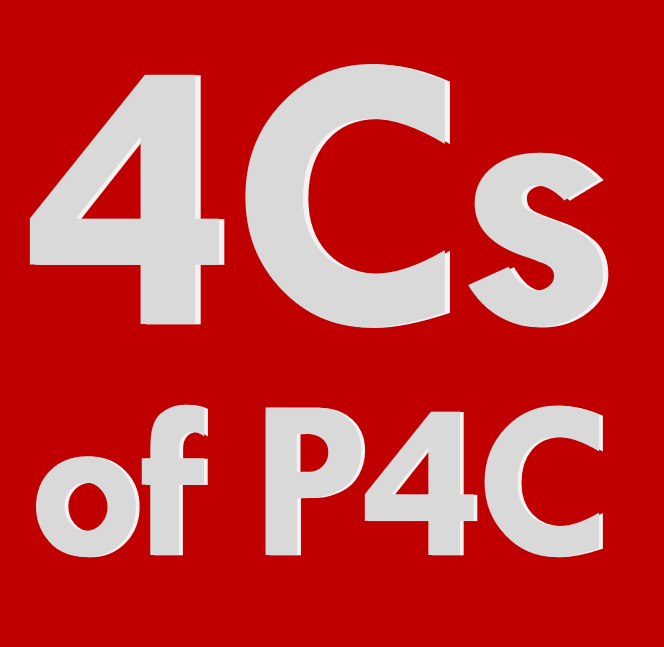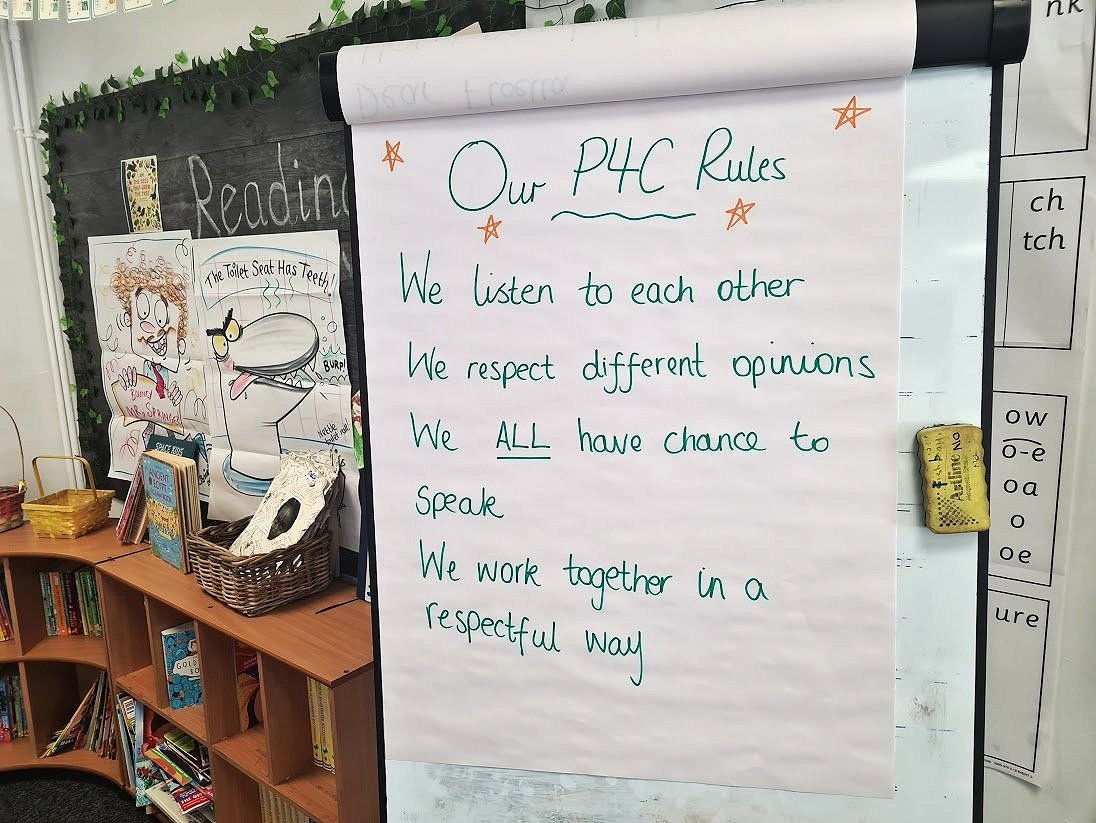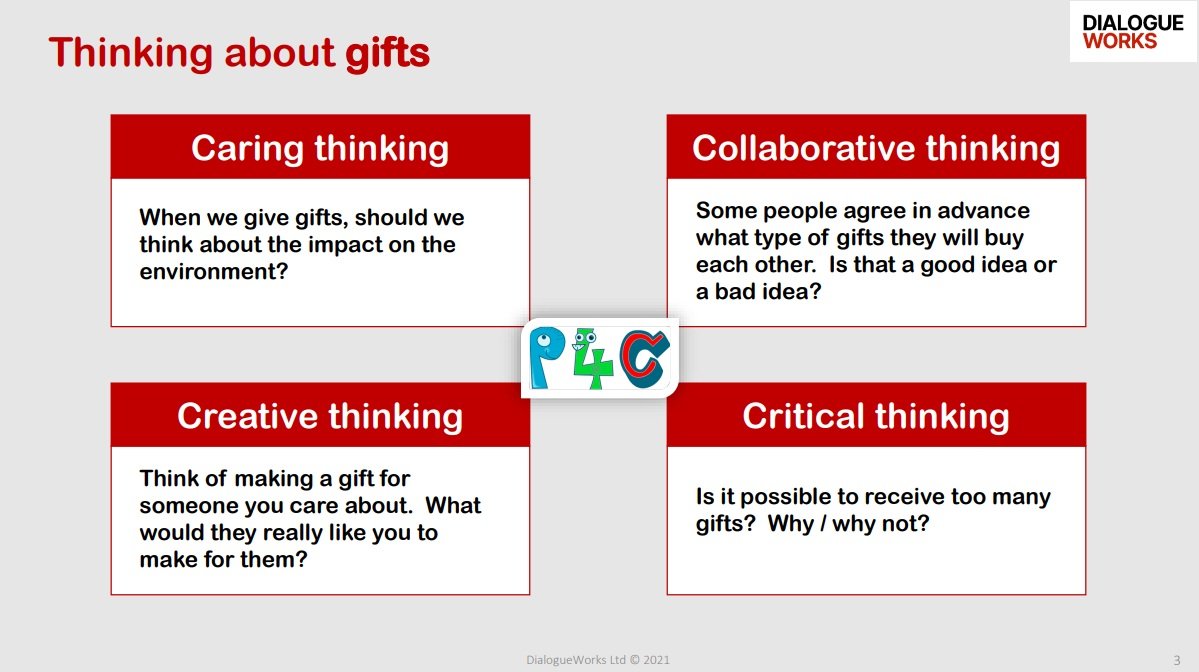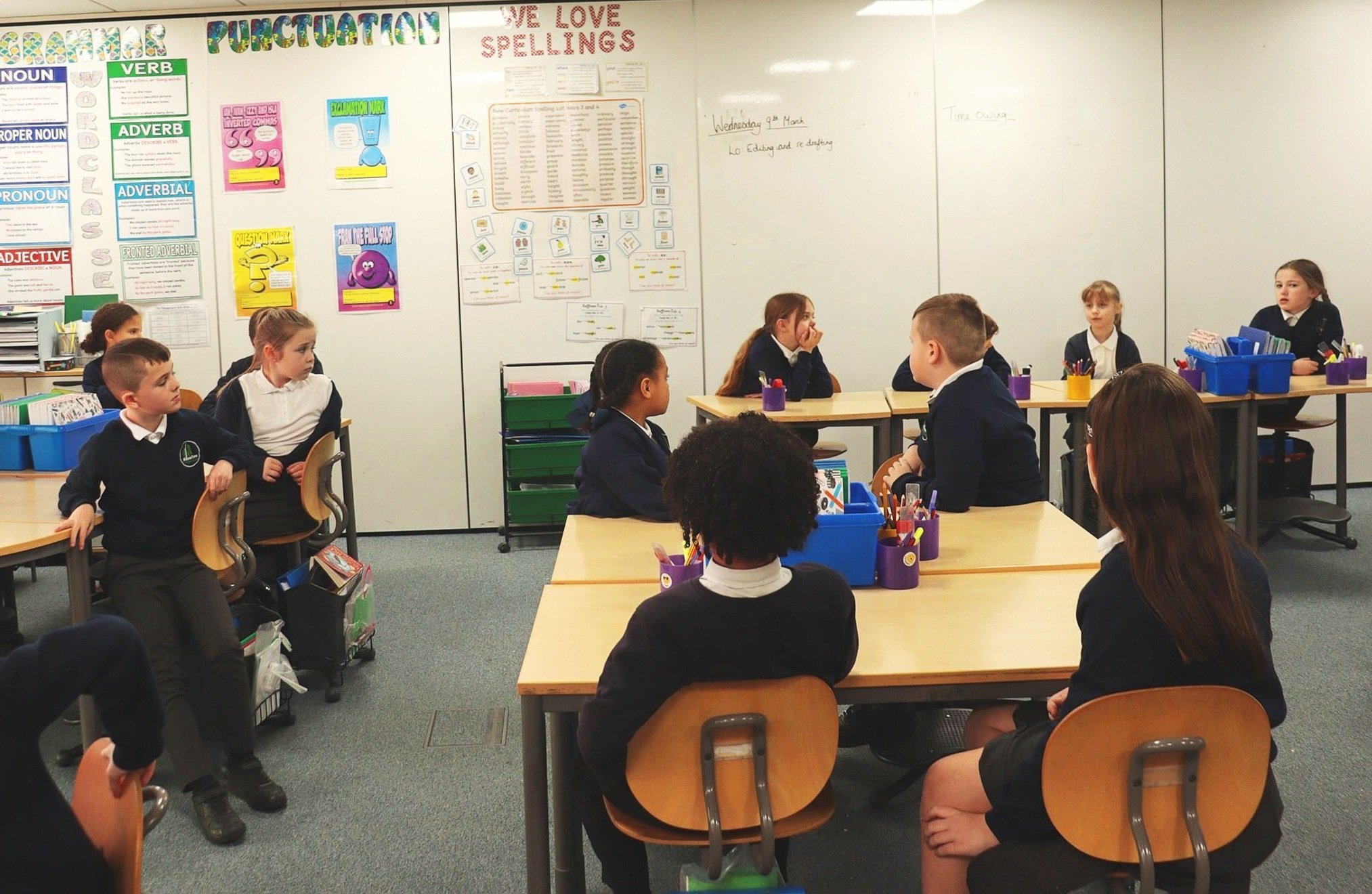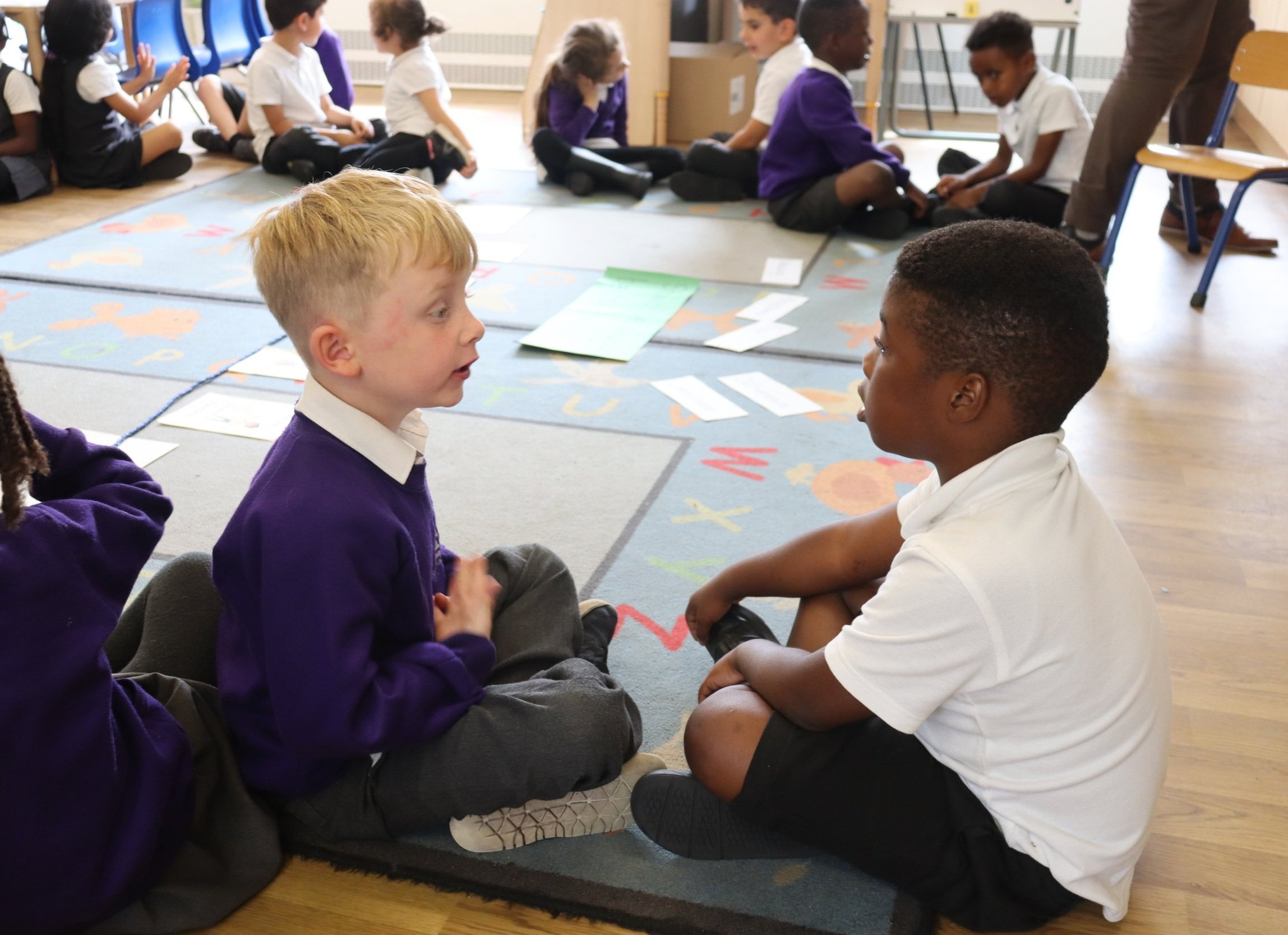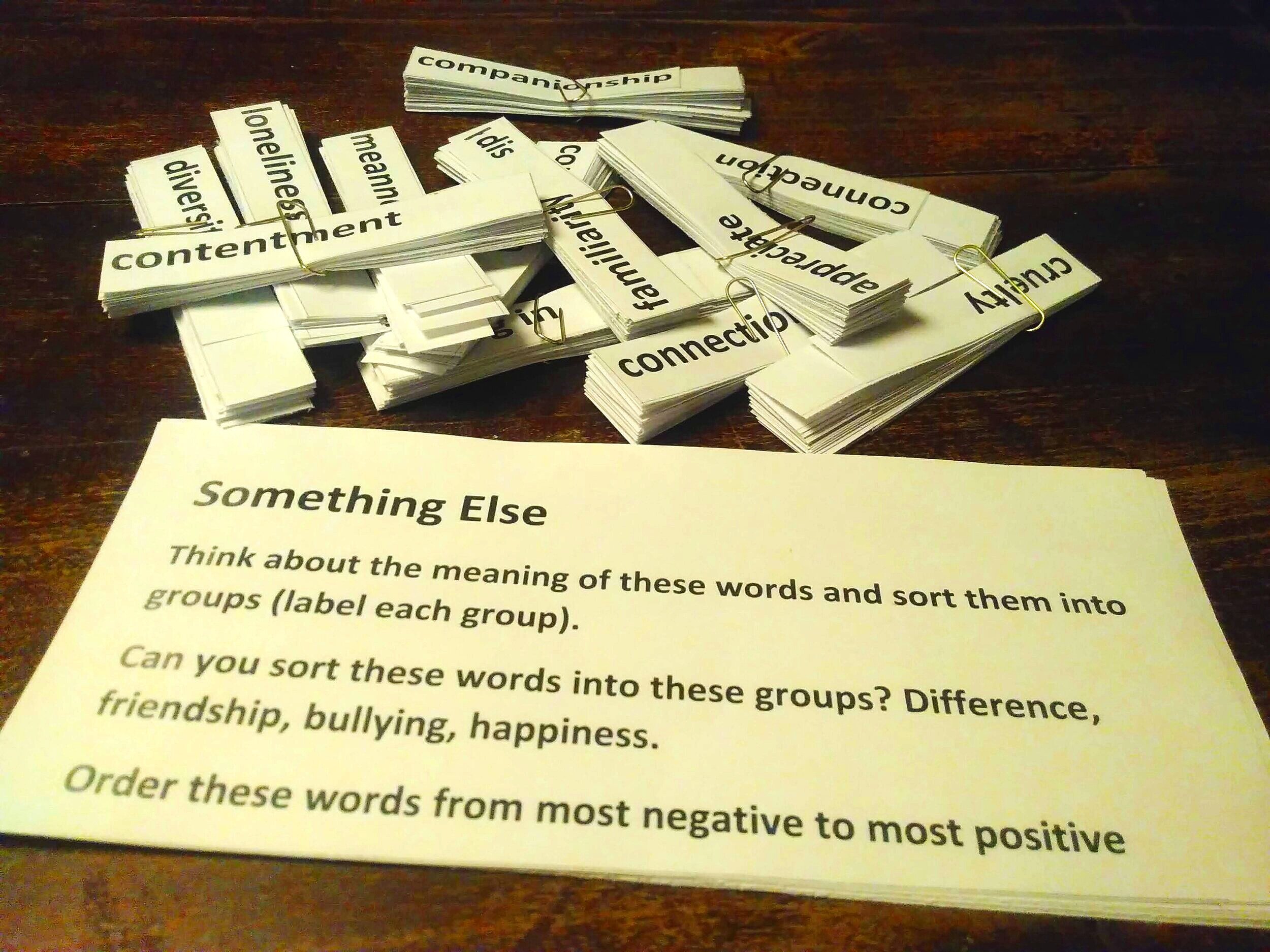Collaborative thinking is one of the 4Cs of Philosophy for Children. Here’s what it might look like during a P4C session.
We are collaborative thinkers when we... speak to each other
Students have dialogue with each other, not just through the facilitator.
They look at each other when they speak, rather than always looking at the facilitator.
They address their peers as a group, or speak specifically to one student, for example I disagree with you, Jake, because…
Students might pick the person who speaks next, or they may be able to respectfully ‘talk into the space’.
To help take the focus off you, occasionally leave the circle and sit discreetly at the side taking notes. If you aren’t the focal point, they’ll speak to each other. But do make sure they know you are listening and interested in what they are saying.
You could also quietly mind-map their thoughts on the board.
To help them ‘talk into the space’ effectively, start with short bursts (between three and five minutes) followed by reflection time. Raise awareness of caring thinking, and making sure that everyone’s included.
See also Speaker chooses and Is your classroom talk ping-pong or basketball?
We are collaborative thinkers when we... build on ideas
Students might use prompts such as I would like to add to what Katie said earlier or I’d like to build on what Amar said…
There is good listening, and good collaborative thinking; you might hear contributions like these:
I’d like to go back to something that Zina said earlier – that there is a difference between cages and enclosures. I’m wondering if the space and natural features that an animal has is the most important factor. Maybe it’s okay for them to be imprisoned if they have enough good elements.
I’d like to build on that, Finley. I agree with you that conservation is important and that zoos play an important role, but…
(Watch out for students using one of these ‘building phrases’ but actually saying something completely unrelated. I’ll write more about this in a future post.)
We are collaborative thinkers when we... are friendly and helpful
If someone didn’t understand or missed something about the stimulus, students might help them by explaining the relevant details.
When students write their questions, they might help each other with spelling.
They might ask a peer whether they need help (instead of assuming they are stuck, and taking over).
They might encourage each other, using kind facial expressions and body language.
They might ask each other in friendly tones, What do you think, Mark?
They might support each other by saying what they think someone else means: Do you mean…?
They might help someone ‘get noticed’, either if they’ve been waiting a while to speak, or if their valuable contribution is too quickly left behind in the enquiry.
We are collaborative thinkers when we... share our experiences
Students give relevant examples of things from their own lives that relate to the concept, question or a contribution from another student.
They feel motivated and encouraged by others to share.
Tip: when lots of students want to say their examples, give them time to discuss in pairs or trios.
We are collaborative thinkers when we... work together
Students stick with it – trying hard together to figure out what the possible answers to the question could be.
They respect thinking time.
When developing questions in pairs or trios, they ask their partner what they think. (Instead of just picking up the pen and starting to write a question on their own.)
Tip: model collaborative thinking in pairs; provide phrases which might be helpful (see Talk prompts for talk partners).





